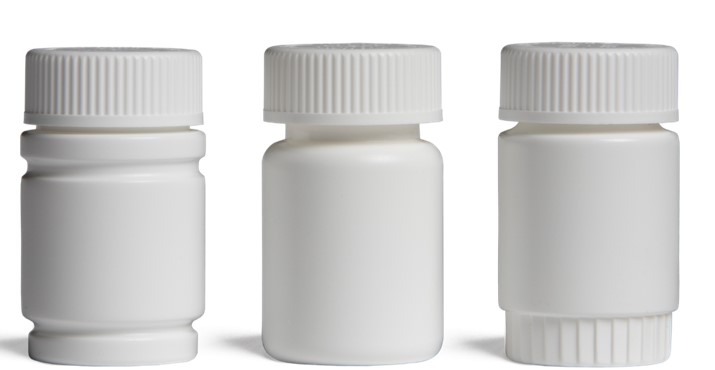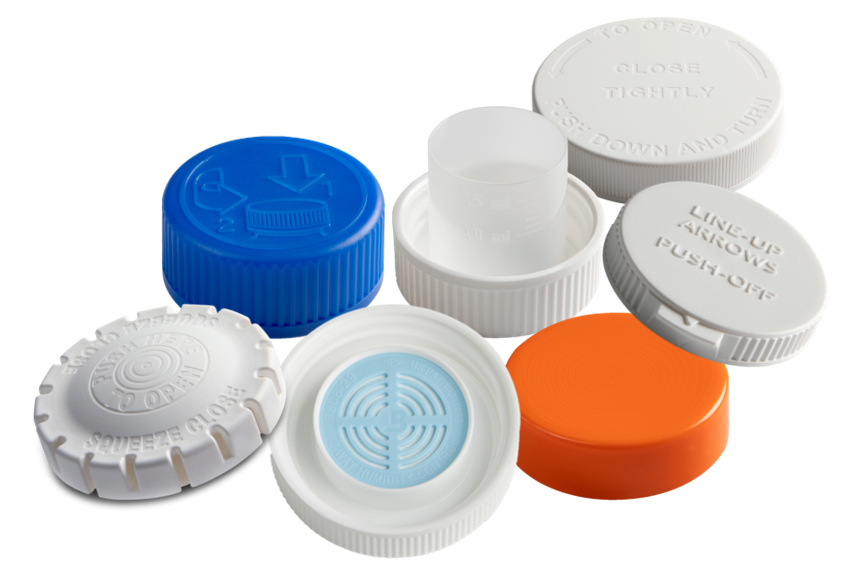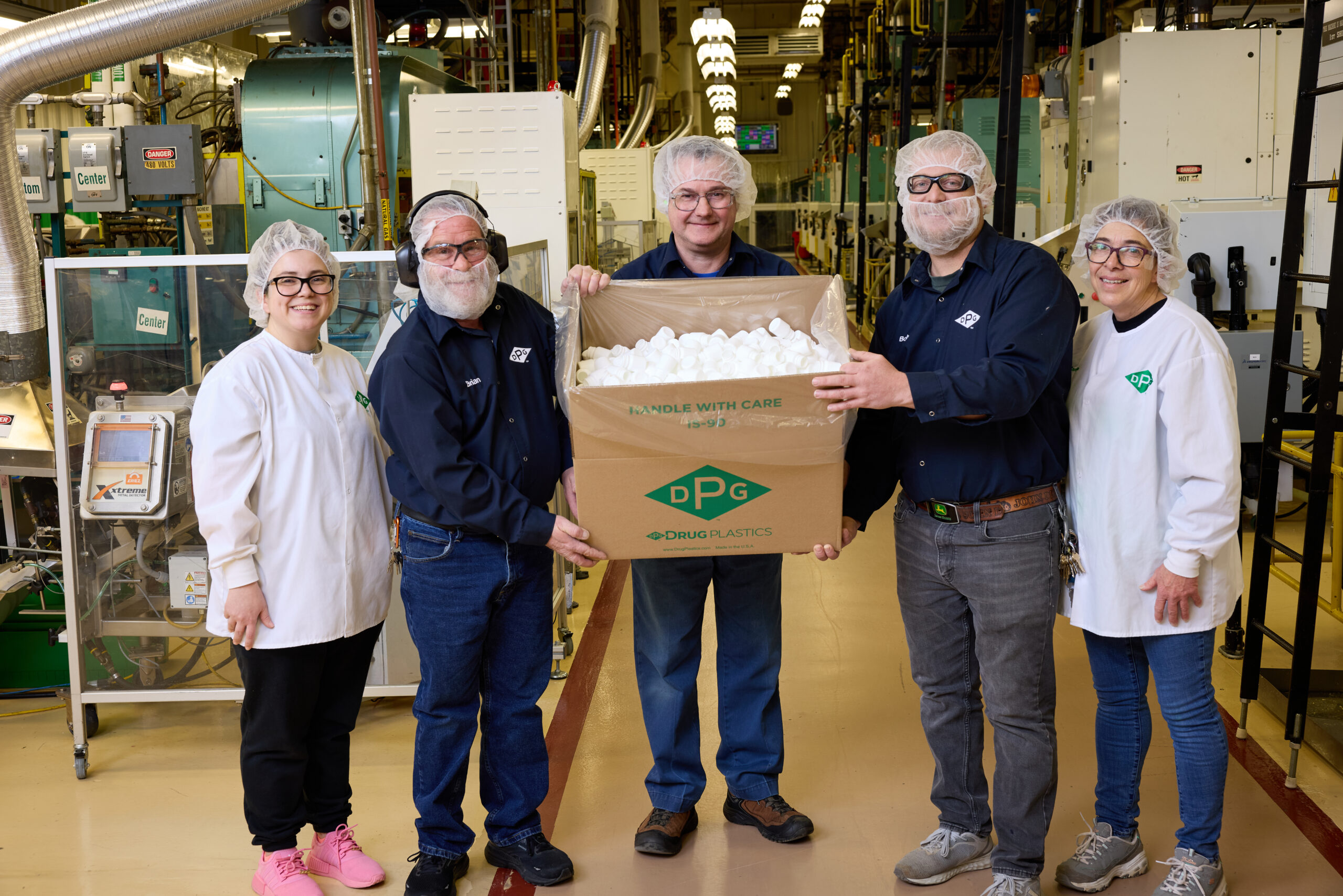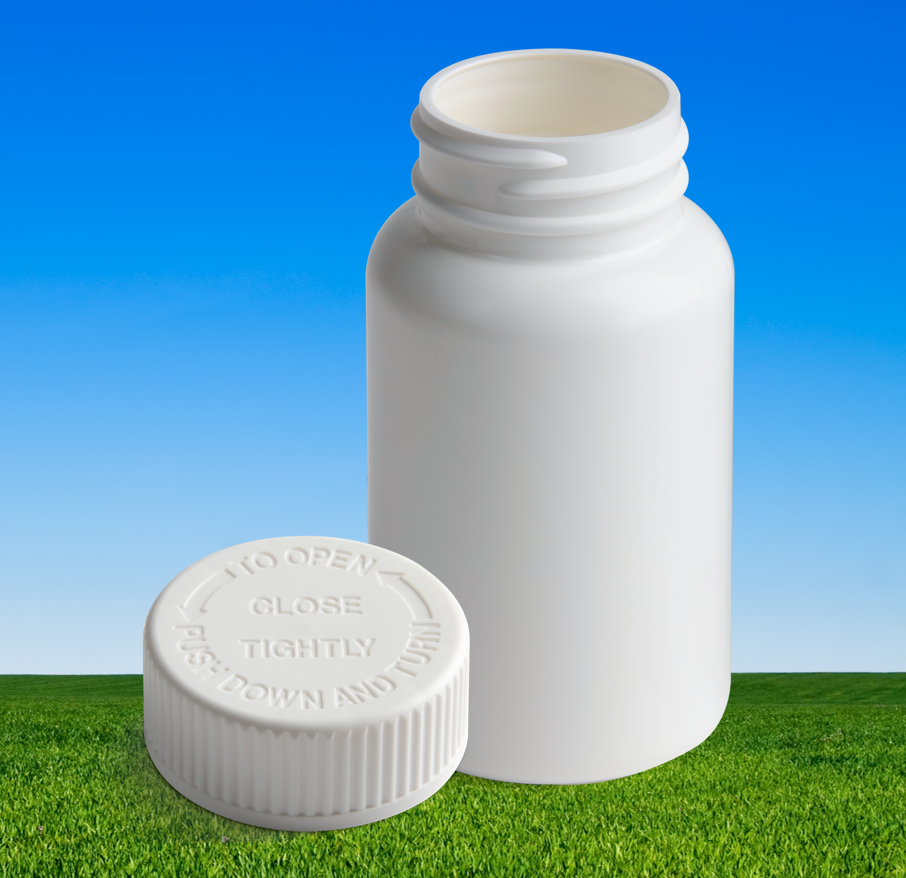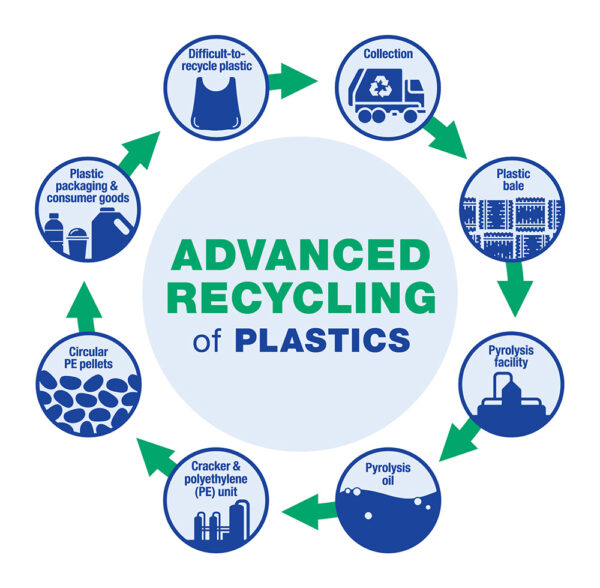One of the most widely used bottles and closures for pharmaceutical packaging is a Wide-Mouth Pharmaceutical Round Bottle and a SecuRx® Child Resistant Closure. Working together, the bottle and closure ensure a secure packaging system that protects the product inside, meets regulatory requirements for child resistance, and protects consumers. At Drug Plastics, bottles and closures are typically produced from controlled lot virgin resins and meet strict pharmaceutical packaging regulations. These packaging components are a great choice for all kinds of prescription and over-the-counter medications.
But what if your customers want more sustainable plastic packaging? Would a bottle and closure still meet strict child resistance regulations? Would a more sustainable option meet the rigid pharmaceutical requirements for packaging medications? The answer is yes! Read on to learn how to make a traditional bottle and closure into more sustainable packaging. We’ll also show you the carbon footprint savings at each step.
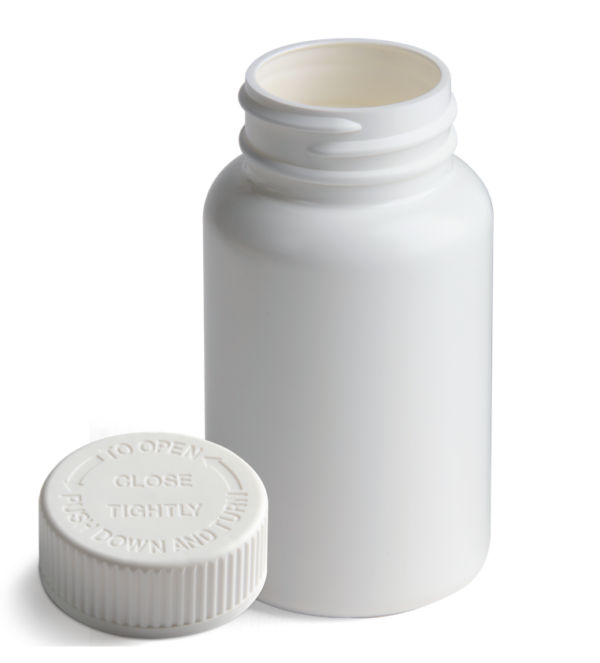
Let’s start with the products. For this example, we will use a 120cc Classic Series Wide Mouth Pharmaceutical Round bottle and a 38mm SecuRx Ribbed Side Text Top Child Resistant Closure, both manufactured by Drug Plastics. The order quantity is 10,000,000 each.
The 120cc bottle is made with 14.5g of virgin High-Density Polyethylene (HDPE) and is flame treated during the manufacturing process. The bottles are packaged in two poly bags (1 mil/each) inside a cardboard box.
The 38mm SecuRx Closure is made with 7.1g of Polypropylene (PP), and is a two-part closure. The closures are also packaged in two poly bags (1 mil/each) inside a cardboard box.
Step One: Right-Weight the Bottle
Right-Weighting or Source Reduction is the practice of reducing the amount of plastic used to manufacture a bottle to make it more sustainable. A bottle with unnecessary excess plastic may result in wasted raw materials and added costs. In addition, a bottle that is made with too little plastic may be too thin to stand up to filling lines or may result in deformed bottles after they’re filled. Right-weighting identifies the required wall thickness specific to your product. For our example order of 10,000,000 bottles, we will manufacture them with 12.5g instead of 14.5g of virgin HDPE. Reducing the amount of virgin resin would save 36 metric tons of CO2 on the order. This translates in everyday terms to: 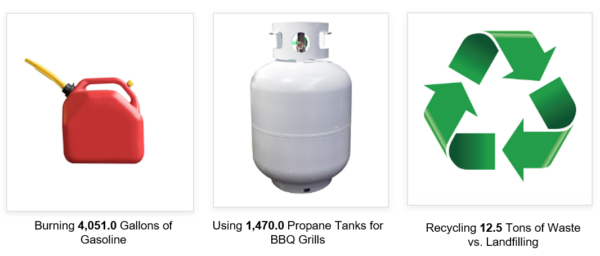
Step Two: Eliminate Flame Treatment
When you opt out of the flame treatment process during manufacturing, you conserve natural gas. Flaming is often used to ensure that water-based adhesive labels and silk screening would adhere properly to plastic bottles. Depending on the type of label used, flaming is not always necessary*. *Contact your label provider for more information. Using our Flaming Elimination Calculator, we can see the savings. The result is a CO2 savings of 5.9 metric tons: 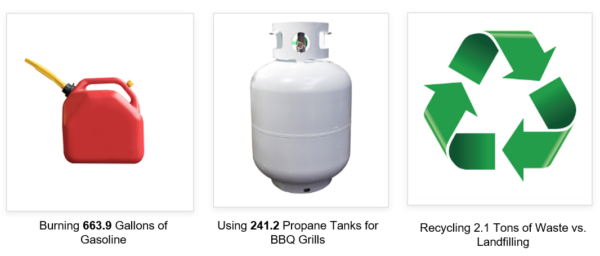
Step Three: Switch to a Single Wall Closure
Switching to a child resistant closure that uses less plastic reduces carbon dioxide emissions, while still maintaining application versatility, FDA-approval, and passes child resistant safety regulations. Our exclusive Pop & Click™ Closure is a more sustainable choice.
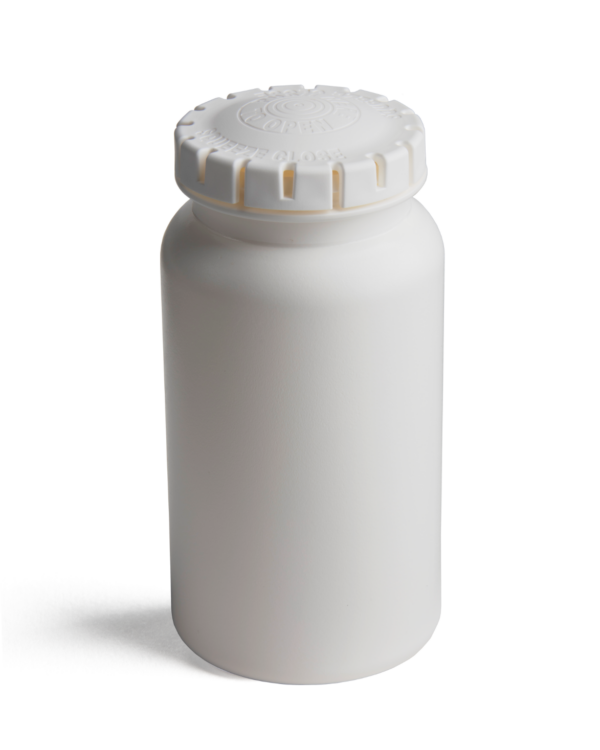
The 38mm Pop & Click Closure works with our 120cc Pop & Click Round Bottle. As in step one above, the Pop & Click Round Bottle is right-weighted to use 12.5g of plastic instead of 14.0g for this example. The Pop & Click Closure uses 2.5g of Polypropylene, as opposed to a two-piece Push and Turn Closure that uses 6.1g. We invite you to use our Polypropylene Closure Calculator to see how switching to a 38mm Pop & Click Closure instead of a 38mm two-piece Push and Turn Closure improves sustainability. In our example order, a CO2 savings of 61.2 metric tons is realized. Here’s how that translates in real world examples:
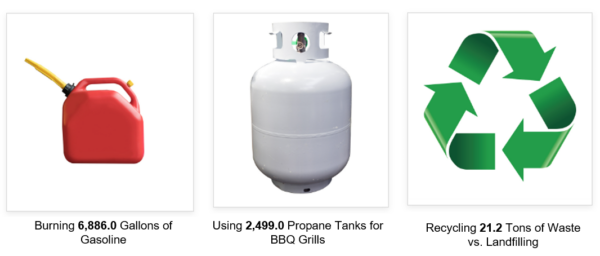
Step Four: Eliminate One Poly Bag inside the Shipping Carton
Collateral packaging is a necessity, but there are ways to reduce it. For many of our customers, double bagging bottles and closures inside the carton is not necessary. Our Bag Elimination Calculator can provide the savings on your order.
For this example, 120cc Pop & Click Round Bottles are normally packaged inside our larger IS-180 cartons. 38mm Pop & Click Closures are normally packaged inside our smaller IS-85 cartons. We will use 2 mil bags for our calculation. When double bagging is eliminated, 22,381 poly bags would be saved when packaging both the bottles and closures. The CO2 savings realized is 8.42 metric tons and translates to: 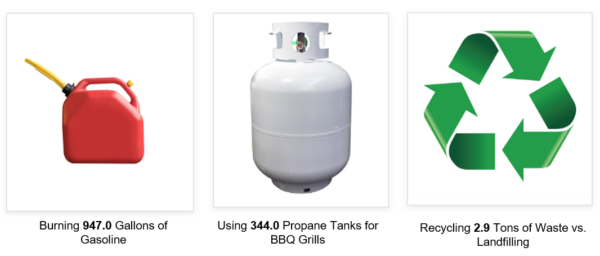
A Small Change Can Make a Big Difference
As you can see, the four steps outlined above can have a major impact on the sustainability of your packaging. In fact, the total savings of these changes is equal to a CO2 savings of 88.02 metric tons. That is a substantial savings. Implementing all of these changes will certainly yield significant savings; however, even if all these changes aren’t possible at one time, making even one change will positively impact the environment. Our experienced team can guide you through all the scenarios and select the right options that make sense for your project.
For Even Greater Sustainability, Switch to Resin Produced through Advanced Recycling
Advanced Recycling is a game-changing process for sustainable packaging. In this process, post-consumer waste is used along with several other feedstock sources to generate identical ethylene molecules to create new batches of your current specified virgin resin. In essence, virgin resin can now be made by using molecules derived from post-consumer waste.
The result: plastic resin that can be processed over and over without any reduction in physical properties – which is the definition of sustainable.
Wouldn’t it be better for the environment if the amount of fossil fuels needed to manufacture plastics was reduced? It’s on the horizon. Read our blog post to learn more.
Ready to Explore Sustainable Options for Your Packaging?
No matter where you are on your sustainability journey, we can help. For more information about how you can improve the sustainability of your plastic packaging, call 610-367-5000 to speak with a knowledgeable team member right away.
Drug Plastics is also taking steps to reduce our own carbon footprint. Read the Case Study to learn more.
